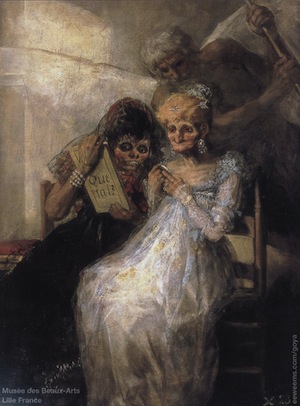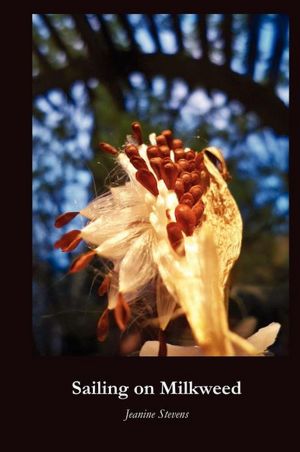Book Review
Jeanine Stevens, Sailing on Milkweed, Cherry Grove Collections, 2012
by Timothy P. McLafferty
“I look to see how a poem is made before I think what it says,” said W.H. Auden in the craft interview that appeared in the first issue of the New York Quarterly. A first look at any one of these poems by Jeanine Stevens reveals layers of craft— each line filled with fine-toned consonant and vowel music, pulsing with rhythm, deceptively conversational, and effortless to read aloud.
Stevens invites her readers to be active participants in the poetic experience. Her poems challenge, and they often had me scrambling to find a location or image, identifying a bit of flora, or seeking a cultural reference. I enjoyed meeting her halfway, being fully engaged by her work, and being drawn into her life and art.
“Bean Nighe,” an eerie poem of legendary Scottish fairies, is crystal clear story telling set to haunting music. I found myself reciting it again and again, trying my best to sound like Basil Bunting, trills and all.
Bean Nighe
The Scottish SylphSpirits of women who died in childbirth
roam creeks and russet heather.On hands and knees, rough fingers wash
garments of those who will die tomorrow.A warrior may wake, jacket laid out
on boulders amid scarlet salmon seekingcolder streams, hear his own breath trickle,
confused: is it water, blood, or his own heartsilently thumping? Ice clumps
in winter’s hazel trees, sun fractures limbs,
water changes course—and there may be singing.
In “Weeds on Donner Summit,” the young black walnut and nutmeg plants reflect the durability of nature, how it outlasts our relationships, our lives, and the things we make, which are temporary at best—
A mix of black walnut
and nutmeg, they stood
in a pottery vase for years,
until only the scent
of dust remained. Just now,I saw them from the
California Zephyr, tight tufts
sticking sideways in creosote
soaked ties, surviving
wind, exhaust
and early autumn heat
—there then,
here now, outlasting us.
“The Crones” is based on a sketch by Francisco de Goya.  The painted version, known by many names, but often called “Las Viejas,” is very near to the image that Stevens must have worked from. In it, we see two old women dressed in fine gowns and much jewelry, their hair dyed, and their aged faces over-painted with cosmetics. They are facing forward, perhaps watching a dance, though no one asks them to dance now. Some say that the figure behind them is Father Time, ready to sweep them away like dust. Stevens envisions a kinder angel who offers them a sweeter exit—
The painted version, known by many names, but often called “Las Viejas,” is very near to the image that Stevens must have worked from. In it, we see two old women dressed in fine gowns and much jewelry, their hair dyed, and their aged faces over-painted with cosmetics. They are facing forward, perhaps watching a dance, though no one asks them to dance now. Some say that the figure behind them is Father Time, ready to sweep them away like dust. Stevens envisions a kinder angel who offers them a sweeter exit—
They lean on each other, remember
the Alhambra, the tango
on the patio of myrtle trees, Rodrigo’s guitar
and red “Lucifer” crocosmias flushed
with bloom. They huddle close,
hold empty dance cards. A faint pressure
of wings behind; a buffed, bronzed
angel, hair shot with white,
breathes sweet peaches, caresses
each bony shoulder, as the tip
of the summer moon fills in
every line with famous names.
“The vortex is the point of maximum energy,” wrote Ezra Pound, adding, “The primary pigment of poetry is the IMAGE.”
Stevens consistently distills her language to arrive at exact words. This accuracy of description allows for a minimum of decoration and a maximum of image thrown on the page. In “Mosaic,” the vortex becomes quite literally the North Pacific Gyre, a vast swirling ocean current that draws and holds waste material from across the North Pacific as wind-driven currents move the debris toward its center. “Mosaic” is an energized image, shining a light on our overuse of plastics, the resultant ocean pollution, and its devastating toll on marine birds, fish, and ocean ecology.
Mosaic
The vortex resembles a giant mosaic,
clockwise circulating Styrofoam, tinged
with blues and whites.Up close, debris photo-degrades,
tiny particles float, resemble planktonto starved birds, toxin filled chunks shiny
as Venetian tiles. An albatross snagsin tough green netting. In the center,
the swollen gut holds a child’s red
and yellow pacifier, swallowed whole.The autopsy shows—
no room for real food.
In “Field Mice” nature shifts from in to out of balance: the newborn mice are safe and guarded, the almonds are bearing, but the couple is tragically disconnected—
Field Mice
It was the summer we had field mice
hiding under wood planks—
pink skin, tissue thin,
newborns that belonged there,
protected
in wild rye grass.Bright green almonds bobbed
overhead in a warm delta breeze.
I touched your arm. You knewI was thinking gestation,
muttered under your breath,
walked to the house,
I followed youinside. A 15.00 receipt lay
on the kitchen table—a vasectomy
—some back alley in Santa Monica.
“Rehearsal” is a quiet and thoughtful commentary on attitudes toward the homeless. Ubiquitous, they disappear under highways and into derelict buildings, fade to gray brown shadows, more like statues than actual people. Even the motes of dust floating in the colored light of the church receive more time and attention. “Rehearsal” steers clear of preaching, yet quietly nudges our perceptions, drawing focus to our desensitized society—
I walk past a few sitting on the steps
of St. Francis. They blend in as statuary
in gray brown shadows. I step insidefor the wedding rehearsal. Winter sun
bounces off stained glass mosaics catching
multicolored dust specks. Airy, delicate, adrift,
they take their time moving across the ceiling.At the front of the sanctuary, a streetwalker
strolls through, high heels clicking along.
The rehearsal goes as planned.
Profoundly image driven, Stevens has a well developed aesthetic of how a poem should appear on a page, sometimes composing in upright bricks of words; sometimes in jagged lines, as in “Mosaic,” reflecting currents in the North Pacific; and in “Sunflower,” with short lines cascading down the page in the manner of the tall and lovely painting by Chao Shao An that is her subject.
Sailing on Milkweed offers a consistent mix of virtuosity, sensitivity, intellect and personality. I’m glad to have studied it, and I’m looking forward to reading more poems by Jeanine Stevens.
Tim McLafferty lives in NYC and is a professional drummer. His poems have appeared or are forthcoming in Forge, The Portland Review, Talking River, Soundings East, and RiverSedge. Ongoing from July, he will be the cover artist for Forge.


